Birmingham, Ala., rolls out the crimson red carpet for Plumbing-Heating-Cooling Contractors Association (PHCC) and its attendees. “The Magic City” played host to the annual PHCC CONNECT show and the city pulled out all the stops. With mild October temperatures, it was the perfect setting to connect with fellow attendees and soak in the vibrant culture Read more
HVACR
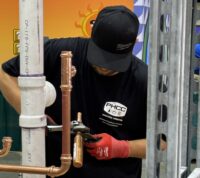
Birmingham, Ala., rolls out the crimson red carpet for Plumbing-Heating-Cooling Contractors Association (PHCC) and its attendees.
“The Magic City” played host to the annual PHCC CONNECT show and the city pulled out all the stops. With mild October temperatures, it was the perfect setting to connect with fellow attendees and soak in the vibrant culture of Birmingham.
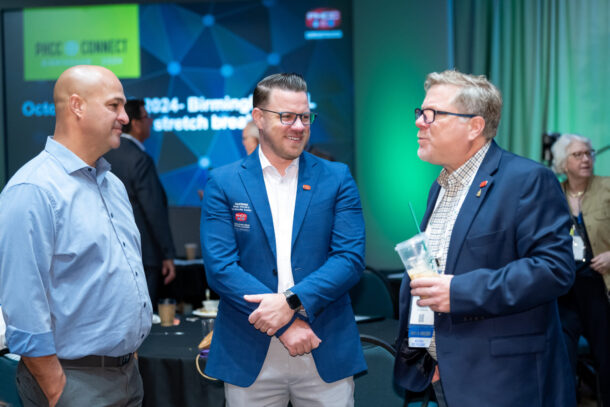
The CONNECT show began with an opening reception at the Barber Vintage Motorsports Museum—recognized by the Guinness World Records as the world’s largest motorcycle collection and home to other rare cars—and ended with an Alabama Tailgate Party at Birmingham Citywalk, where visitors could enjoy an array of food trucks serving local delicacies and engage in fun games.

The trade show floor was buzzing with latest in products and technology. New this year—although one needed to be a member to gain full access to the entire CONNECT experience—the Products & Technology Showcase floor was open free of charge to local walk-ins. This indeed brought in dozens more from the greater Birmingham area.
“This is the best place to do all of the networking,” says Erica Barnes, president, General Plumbing & Air Conditioning, Inc., Lake Worth, Fla. “I love getting new ideas form the floor and seeing what’s developing over time, such as artificial intelligence (AI) or seeing what new tools are coming out.”
 A cool moment during PHCC president Joe Cornetta’s CONNECT opener, 94-year-old James Lindsey of Lindsey Brothers Plumbing and Heating in Norfolk, Va., was recognized for his contributions to PHCC and the industry. Starting his plumbing career at 16, he founded his own business, which will celebrate its 60th anniversary in 2026.
A cool moment during PHCC president Joe Cornetta’s CONNECT opener, 94-year-old James Lindsey of Lindsey Brothers Plumbing and Heating in Norfolk, Va., was recognized for his contributions to PHCC and the industry. Starting his plumbing career at 16, he founded his own business, which will celebrate its 60th anniversary in 2026.
The annual CONNECT Show opens with an opening breakfast emceed by Bruce Carnevale, CEO, Bradford White, a staunch supporter of the association and the skilled trades. Carnevale gave an update on the company and talked about the impending NAECA 4 regulations coming down the pike in 2029, with the eventual movement away from atmospheric venting to all condensing. The Department of Energy (DOE) says the standards will require minor updates to gas-fired storage water heaters, while electric storage water heaters more than 35 gallons will require heat pump technology.
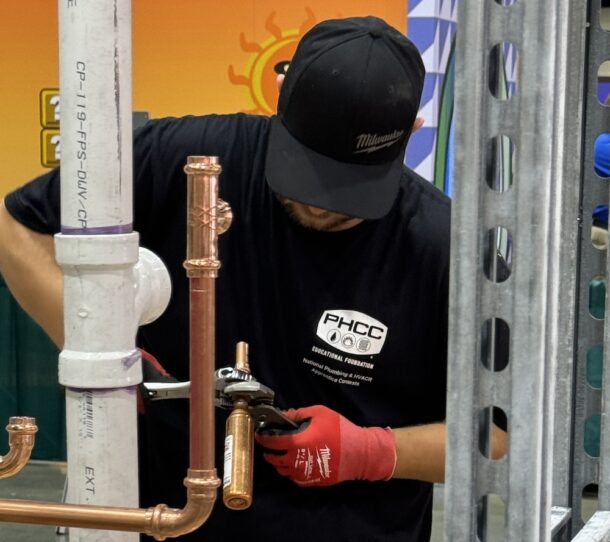
A yearly staple at the CONNECT show is the PHCC Educational Foundation’s National Plumbing and HVACR apprentice contests where plumbing apprentices roughed-in a bathroom—including the drain, waste and vent lines, a toilet, a sink and shower. HVACR apprentices demonstrated their knowledge with a written test, and put their hands-on skills to the test with brazing, pressure testing, refrigerant recovery, and diagnosing and repairing a package unit system. This year, Logan Cunningham with John J. Maurer Inc., Cataumet, Mass., took top prize for plumbing, while Dane Gonser with Emcor Services Fagan, Kansas City, Kansas, was the winner of the HVAC portion.

This year’s theme, “Authentic Connections,” highlighted the importance of building trust and fostering relationships within the industry. From the daily keynotes featuring best-selling author and Navy commander Mary Kelly, who uncovered the key factors behind leadership success and failure to Jeff Butler, who with the help of the three “Cs”—cadence, collaboration and communication—explored actionable strategies to effectively manage cross-generational challenges and leverage the diversity of your multi-generational workforce as a competitive advantage.
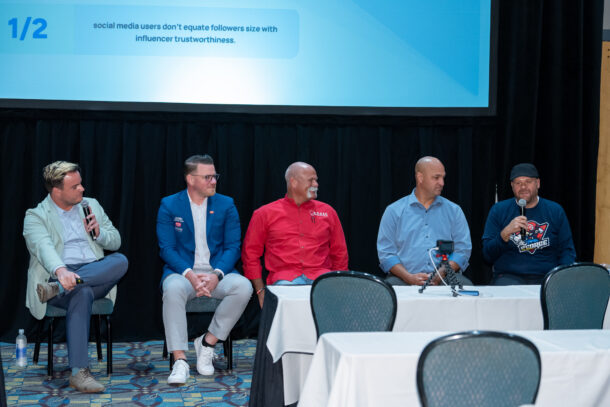
Another highly informative and interactive session featured some of the industry’s most recognizable social media personalities who gave advice in a session aptly named, “What the Hell Is an Influencer?” In addition to friends George DeJesus, George’s Drains LLC, Morris County, N.J., and Mike Prencavage Jr., The Family Plumber, Los Alamitos, Calif., last-minute, heavy-hitter fill-ins, Dustin Van Orman, Any Hour Services, Orem Utah, and Roger Wakefield, Richardson, Tex., stepped in to inform attendees how to use social media in an effective way, for business of course.
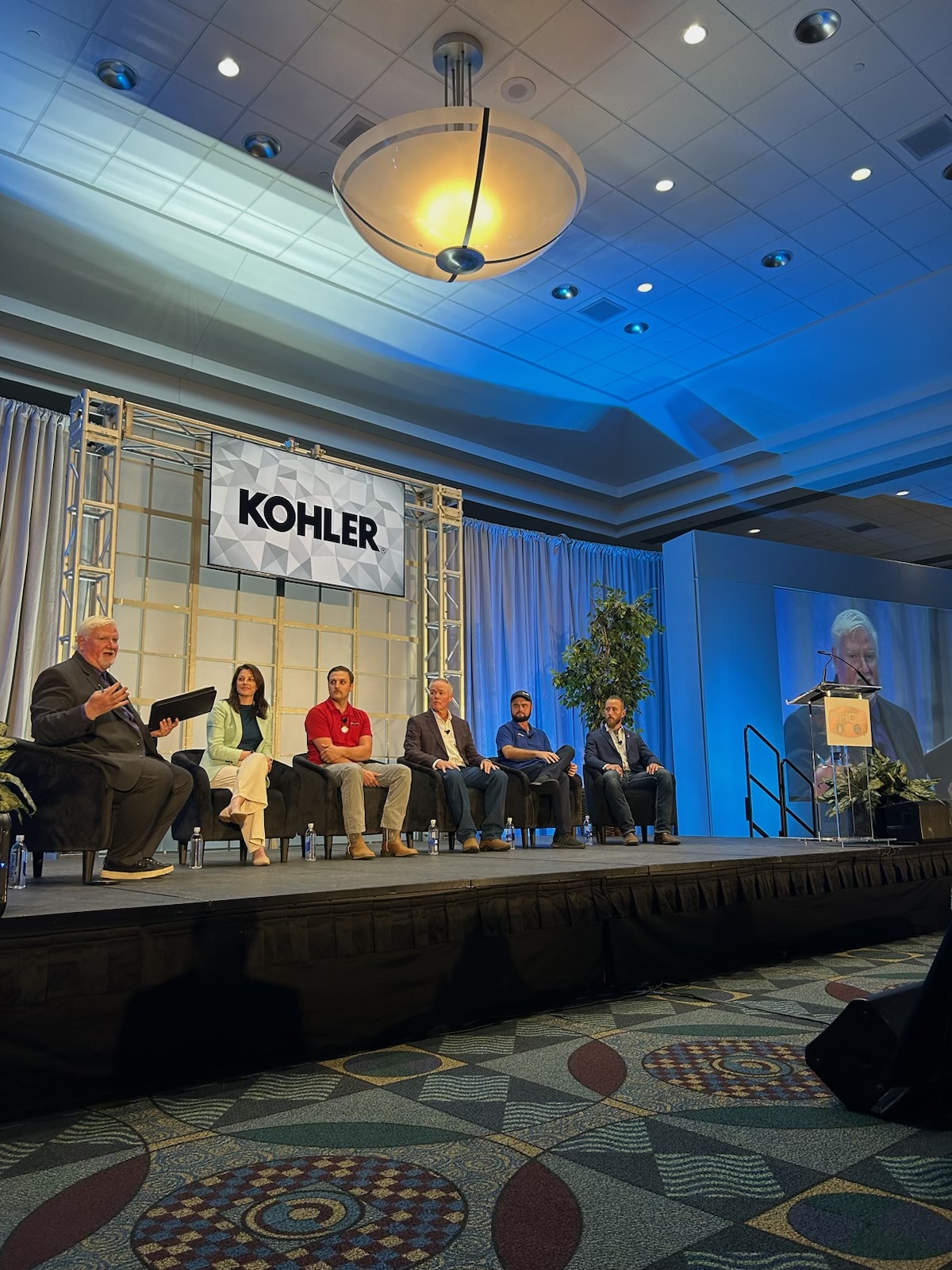 The final keynote on reverse mentoring, moderated by yours truly, featured Erica Barnes, president, General Plumbing & Air Conditioning; Daniel Birmingham, project manager, JRC Mechanical, Chesapeake, Va.; Chris Johnson, owner, Charles Chester Plumbing & Heating, Elko, Nev.; Chase Johnson, general manager, Charles Chester Plumbing & Heating; and Tyler Arndt, Arndt & Sons Plumbing, Brooklyn, Wis., as they shared their experiences and how their ideas and contributions could help their companies thrive in the future.
The final keynote on reverse mentoring, moderated by yours truly, featured Erica Barnes, president, General Plumbing & Air Conditioning; Daniel Birmingham, project manager, JRC Mechanical, Chesapeake, Va.; Chris Johnson, owner, Charles Chester Plumbing & Heating, Elko, Nev.; Chase Johnson, general manager, Charles Chester Plumbing & Heating; and Tyler Arndt, Arndt & Sons Plumbing, Brooklyn, Wis., as they shared their experiences and how their ideas and contributions could help their companies thrive in the future.
Also new this year to CONNECT was live podcasting from the tradeshow floor. The magic of spontaneous discussions, solutions, and insights came alive with some of the industry’s top podcasters. These media personalities hosted high-profile guests as they shared their particular insights to the industry.

Oh, and why is Birmingham called the Magic City, you may ask? Including other names such as “The Iron City” or “The Pittsburgh of the South,” Birmingham is referenced as the Magic City because its soil contained the three necessary elements to produce steel: limestone, coal and iron ore.
Next year’s CONNECT will take place in Grand Rapids, Mich.
Plumbing and HVACR apprentice contests in Birmingham are set to showcase top talent this year. Falls Church, Va. — A strong line-up of top apprentices will have their opportunity to shine at the PHCC Educational Foundation’s National Plumbing and HVACR apprentice contests. This two-day competition will take place during CONNECT 2024, October 7-10, at the Read more
Plumbing and HVACR apprentice contests in Birmingham are set to showcase top talent this year.
Falls Church, Va. — A strong line-up of top apprentices will have their opportunity to shine at the PHCC Educational Foundation’s National Plumbing and HVACR apprentice contests. This two-day competition will take place during CONNECT 2024, October 7-10, at the Birmingham Jefferson Convention Center, Birmingham, Alabama.
These contests — always a popular attraction on the trade show floor — will highlight the skills and expertise of the nation’s top apprentices in the plumbing and HVACR industries and allow attendees to watch the contestants’ progress.
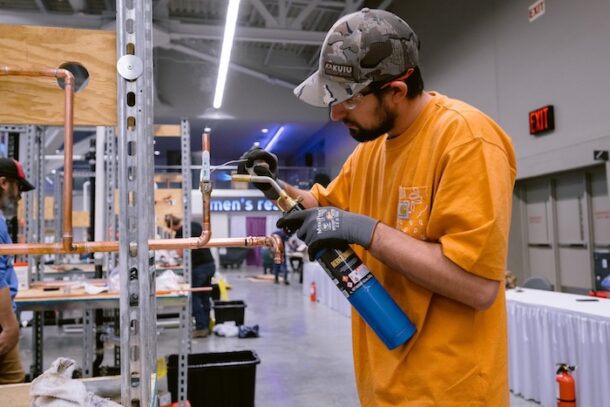
Apprentices from across the country will come together to showcase their expertise and compete for the title of the nation’s top apprentice. This event offers apprentices not only a chance to demonstrate their skills but also an opportunity to network with fellow apprentices and industry professionals.
Plumbing apprentices must rough-in a bathroom – including the drain, waste and vent lines, a toilet, a sink and shower. HVACR apprentices must demonstrate their knowledge with a written test, plus their hands-on skills with brazing, pressure testing, refrigerant recovery and diagnosing and repairing a package unit system.
The evening of Tuesday, October 8, will kick off with a pep rally on the tradeshow floor to energize and support the contestants. University of Alabama sportscaster Chris Stewart will emcee the event. After the contest concludes on Wednesday, October 9, participants and attendees are invited to celebrate at the awards breakfast on Thursday, October 10. This event will honor the top performers and offer a final chance to honor the hard work and dedication of the next generation of industry leaders.
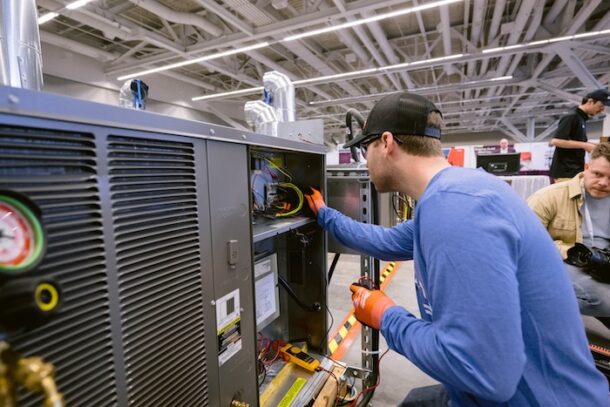
“We are very proud to sponsor these contests each year,” says Kevin Tindall, PHCC Educational Foundation chair. “Not only do they provide a once-in-a-lifetime opportunity for star apprentices to demonstrate their skills on a national stage, but the contests also support the Foundation’s mission by helping to generate awareness for local apprentice programs, boosting interest in the fields of plumbing and HVAC and attracting new recruits to the industry.”
For more details, visit phccweb.org/CONNECT. This site offers information on education sessions, speakers, exhibitors, registration and hotel reservations, as well as the many attractions of Birmingham, Alabama, known as “The Country’s Best Kept Secret.” Register for CONNECT 2024 here.
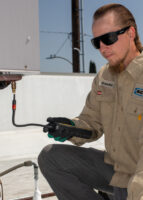
Okay, we know soap bubbles are the traditional method for refrigerant leak detection on HVACR systems and they can be a very tried and true indicator. But when you need to pinpoint micro-leaks fast, an electronic detector with a higher sensitivity than bubbles can be the ticket. The four main types of electronic leak detectors Read more
Okay, we know soap bubbles are the traditional method for refrigerant leak detection on HVACR systems and they can be a very tried and true indicator. But when you need to pinpoint micro-leaks fast, an electronic detector with a higher sensitivity than bubbles can be the ticket.
The four main types of electronic leak detectors available to HVACR techs include: heated diode, corona discharge, infrared and ultrasonic. The following is a snapshot of how the different technologies work and the ins and outs of each to help you determine which is the best fit for your toolkit.
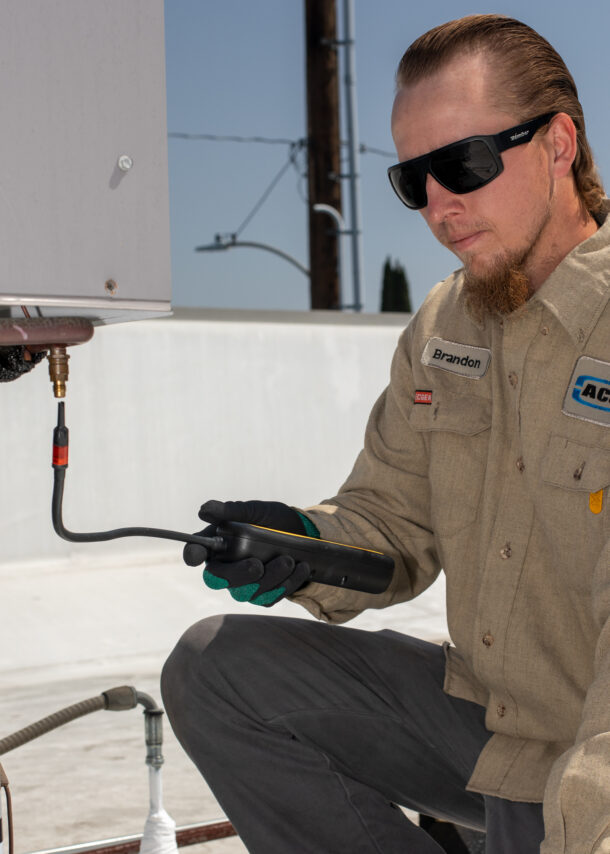
Heated Diode Detectors
With a heated diode detector, sampled air is heated to a high temperature, ionizing halogenated refrigerant gases. The resulting charged chlorine and fluorine ions, even in trace amounts, generate current through the diode which then triggers an alarm. Heated diodes detect leaks of HFC, CFC, HCFC, HFO, H2N2 (Tracer Gas) and other refrigerant blends. The Fieldpiece DR58 Heated Diode Leak Detector performs particularly well with R410A and sniffs refrigerant leaks as small as 0.03 oz/yr – that’s 20 times more sensitive than soap bubbles.
Heated diode detectors are not prone to false alarms, but their sensor life may be affected by excessive refrigerant exposure and contaminants like oil. The sensor should be checked regularly with a calibrated reference leak. It is recommended to replace to the Fieldpiece DR58 sensor after approximately 300 hours of use.
Corona Discharge Detectors
In a process similar to heated diode detectors, corona discharge detectors also react to a change in current flow from ionized gases. However, they pull sample air through an electrical field around an electrode. Gases are broken down by the electric arc (corona discharge), causing a change in electrode current which then signals a leak.
False alarms can occur with corona discharge detectors because they do not trigger on specific refrigerant compounds. Response times are slightly slower than heated diodes and corona sensor life can be as short as 24 hours of use.
Infrared Leak Detectors
Infrared detectors shine a beam of infrared (IR) waves through potentially contaminated air to detect and analyze trace amounts of refrigerant and signal a leak. Because light absorption in the IR spectrum is gas-specific, they are the least susceptible to false-positive alarms and considered highly accurate across all refrigerant types. Infrared detectors also have the edge with newer refrigerants that contain less chlorine and fluorine, the trigger for heated-diode sensors.
When considering the cost of ownership of a leak detector, the long life of the infrared sensor will factor in the equation. For example, the sensor life is approximately 10 years for the Fieldpiece DR82 Infrared Leak Detector.
Ultrasonic Leak Detectors
An ultrasonic leak detector is also known as a “listening detector.” When refrigerant escapes from a pressurized system, it creates tiny sound fluctuations in the form of high-frequency sound waves that the sensor picks up.
These detectors can hear very small leaks on high-pressure systems and their sensors last for a long time. However, when a system has low pressure, these detectors are not as accurate or effective. Ultrasonic leak detectors can also be affected by jobsite noise.
Techs have multiple options when looking for electronic leak detection tools, including heated diode, corona discharge, infrared, and ultrasonic. While each has its merits, the tool that’s right for you will depend on the refrigerants you work with now and expect to work with in the future, the accuracy desired, and your sensitivity to overall cost of ownership. An electronic leak detector is an investment that makes your job easier, so it’s worth the homework to figure out which one needs a spot in your tool bag!
Courtesy of Fieldpiece Instruments
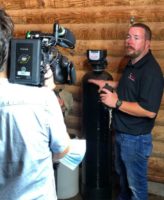
As a plumber, the chances are that you are used to working alone or within a small team. However, it is important to keep in mind that most clients will address plumping works and renovations as part of a larger, more extensive project. As such, they are likely to look for trusted traders and ask Read more
As a plumber, the chances are that you are used to working alone or within a small team. However, it is important to keep in mind that most clients will address plumping works and renovations as part of a larger, more extensive project. As such, they are likely to look for trusted traders and ask for recommendations and referrals.
So, if you are looking to develop your plumbing business and bring more projects and work to your company, partnering with other contractors and networking with specialists in the field is key! Here is all you need to know.
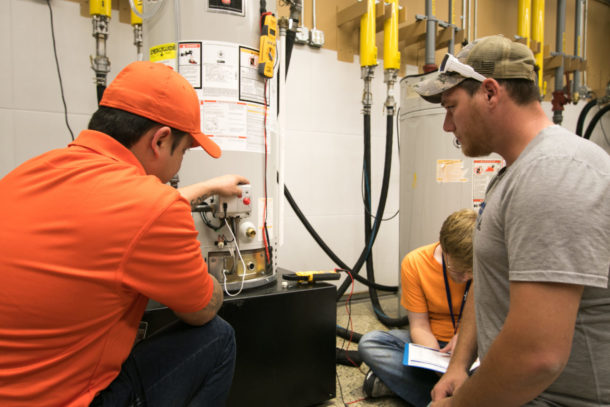
Minimize The Risk of Errors
When it comes to replacing the plumbing system in a typical home, homeowners can spend between $3,000 and $16,000 – which, alone, is a considerable investment! But there’s more to that! Indeed, most homeowners will tackle plumbing projects as part of a home makeover that often involves renovating the bathrooms or kitchen. These projects can not only be costly, but come with a high risk of errors and mistakes!
By working with the other contractors involved in the project, you and your plumbing team can minimize the risk of costly mistakes and remediations.
Enhance Communication Throughout The Project
By working with the other contractors involved in the project, you can boost communication and ensure that the client’s expectations are effortlessly met. For example, if a client is looking to update a house for accessibility and aging in place, you may take care of making the bathroom, bathtubs, or shower more accessible, while also working with safety experts to install alarms, rails, and other safety features.
Build A Network of Contacts
The majority of homeowners and clients looking to tackle a renovation will look for a contractor they can trust. To do so, they are likely to:
- Ask for referrals and personal recommendations from trusted family members and friends
- Speak to contractors they can trust to check whether they know a specialized plumber, electrician, or trader
- Check online professional directories
- Look for contractors with an excellent online reputation and great reviews
- Ask at the local hardware store
Having a network to rely on can make your business more easily discoverable by clients looking for your services.
Leverage Shared Tools
As a single contractor, the chances are that you may not have all the tools and equipment needed for highly complex projects. In turn, you may often find yourself purchasing or renting costly gear, which can take a toll on your cash flow. That’s where working with other contractors and sharing the tools and equipment available – including a bulk bag filler, a soldering station, or a drain camera system – can help to save money and boost your business.
Exchange Expertise
Although each contractor involved in the project will have the skills needed to complete their tasks, it is important not to underestimate the benefits of sharing experiences and capabilities. These could be from past projects, recent innovations, or training courses. Be sure to interact and communicate with the other professionals involved in each project to enhance your skill set and capabilities – and, ultimately, keep your business relevant!

Danfoss, a global leader in climate and energy solutions, has joined forces with Enersponse, a leading distributed energy resource (DER) management company based in California, to introduce cutting-edge services for American supermarkets. This collaboration aims to enhance energy flexibility in HVAC and refrigeration systems by unlocking benefits for the food retail sector with the Automated Read more
Danfoss, a global leader in climate and energy solutions, has joined forces with Enersponse, a leading distributed energy resource (DER) management company based in California, to introduce cutting-edge services for American supermarkets.
This collaboration aims to enhance energy flexibility in HVAC and refrigeration systems by unlocking benefits for the food retail sector with the Automated Demand Response (Auto-DR) solution.
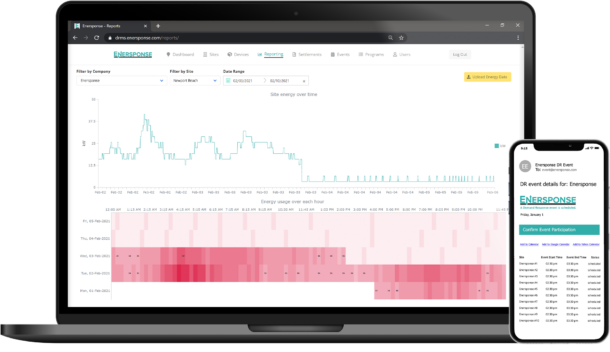
Providing Demand Flexibility and Energy Efficiency
The food retail industry is transforming through digitalization and sustainability is a key phase of this journey. To foster the green transition, Danfoss and Enersponse will collaborate to ensure food retailers achieve grid stability, while reaping financial rewards automatically, via Auto-DR. By reducing energy usage when electricity demand exceeds supply, Auto-DR helps ensure the lights stay on and the food stays fresh, all while reducing energy use during peak periods which often correlates with high emission periods.
Enersponse’s DERMS Platform will be seamlessly integrated into Danfoss Alsense®, an Internet of Things (IoT) food retail services cloud solution that tracks refrigeration asset performance, allowing retail managers to easily respond to alarms, ensure 24/7 monitoring of food conditions, and reduce energy consumption.
“We maintain an unwavering commitment to seeking out premier building control partners, enhancing the impact of our energy initiatives,” explained James McPhail, the visionary CEO and founder of Enersponse. “Being at the forefront of our industry with unmatched technology, collaborating with a company like Danfoss was an obvious choice. This partnership marks a significant milestone for both organizations, delivering not only excitement but also substantial benefits to their customers such as tailored demand response events, the generation of a passive income all while maintaining adherence to safety standards to ensure perishable foods remain well within the designated safe temperature zones and a multitude of other advantages.”
“We are thrilled to partner with Enersponse to expand our offerings to food retail customers in the United States,” says Natalie Schnippering, Danfoss Head of Digital Services. “With digital innovation, we can capture supermarket data and gain the insight needed to optimize energy use, automate corrective actions, and prevent peak loads and energy waste.”
Tangible Impact of Automatic Demand Response Measures
Electricity consumption varies throughout the day and year. Uncontrolled demand-side consumption will, therefore, often lead to critical congestion in the grid during peak hours. Demand-side flexibility and energy efficiency measures shift the energy consumption to times when demand is lower. This proactive Smart Demand Response approach from Danfoss and Enersponse enables supermarkets to reduce electricity costs by lowering cooling loads during peak hours.
According to the International Energy Agency, Smart Demand Response could provide 185 gigawatts (GW) of system flexibility, equivalent to the currently installed electricity supply capacity of Australia and Italy combined.
